There is just one way to handle leaves, remove them as soon as you can from your lawn and flower beds. The finest tool for you to use to accomplish that is a leaf blower. Want to know how leaf blowers are rated? We've sifted through the internet and researched the answers to share with you.
A leaf blower's performance is rated using cubic feet per minute (CFM), a unit of measurement for the volume of air it pushes through. Another method of assessing a blower's power is miles per hour (mph), a unit measuring the airflow rate.
In this article, we shall clear the air by discussing leaf blowers thoroughly. Especially how it will rate. We’ll also share with you how it works, some types of it, maintenance, and more. So keep on reading.
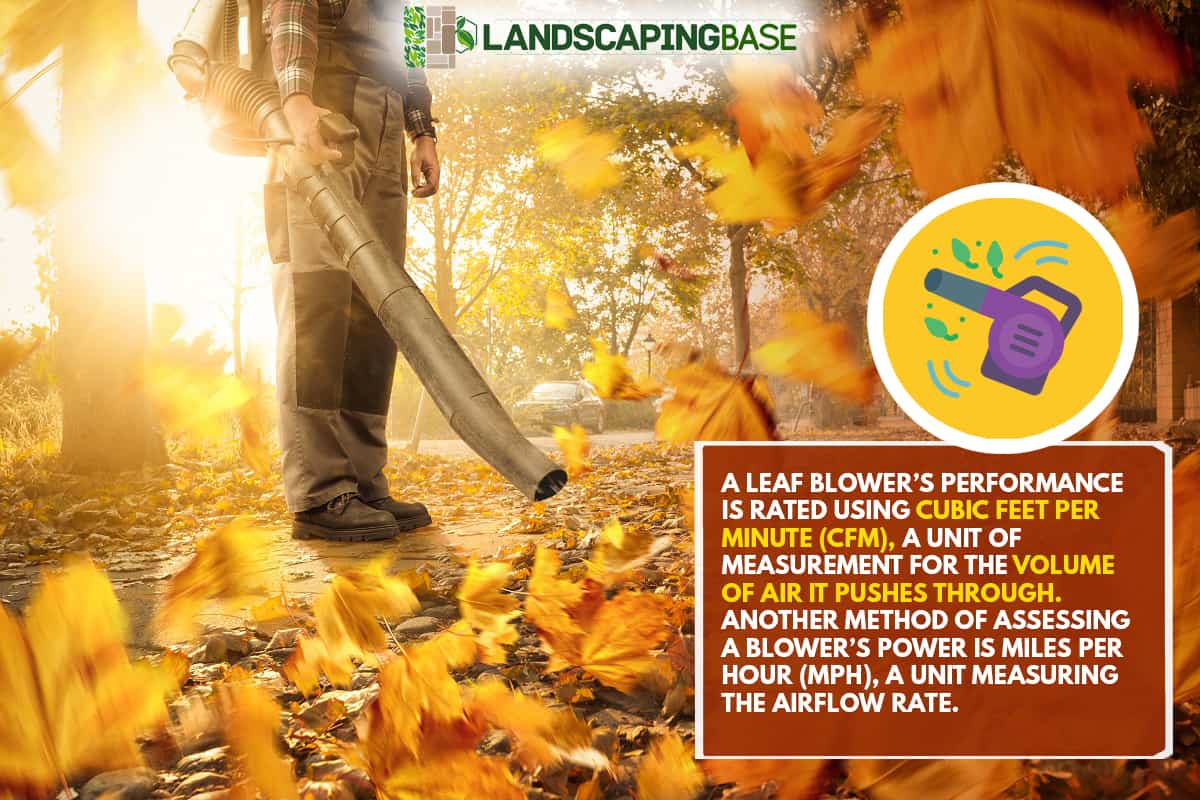
Leaf Blower Basics
A leaf blower is hand-held, engine-powered maintenance equipment that is used in place of a rake or broom to blow away leaves and other debris from a lawn or garden.
The majority of the time, the trash is either blown into a pile to be picked up or into the gutter so that a city street sweeper may pick it up. The long neck or snout of a leaf blower, which is attached to a small motor at one end, directs a constant stream of air.
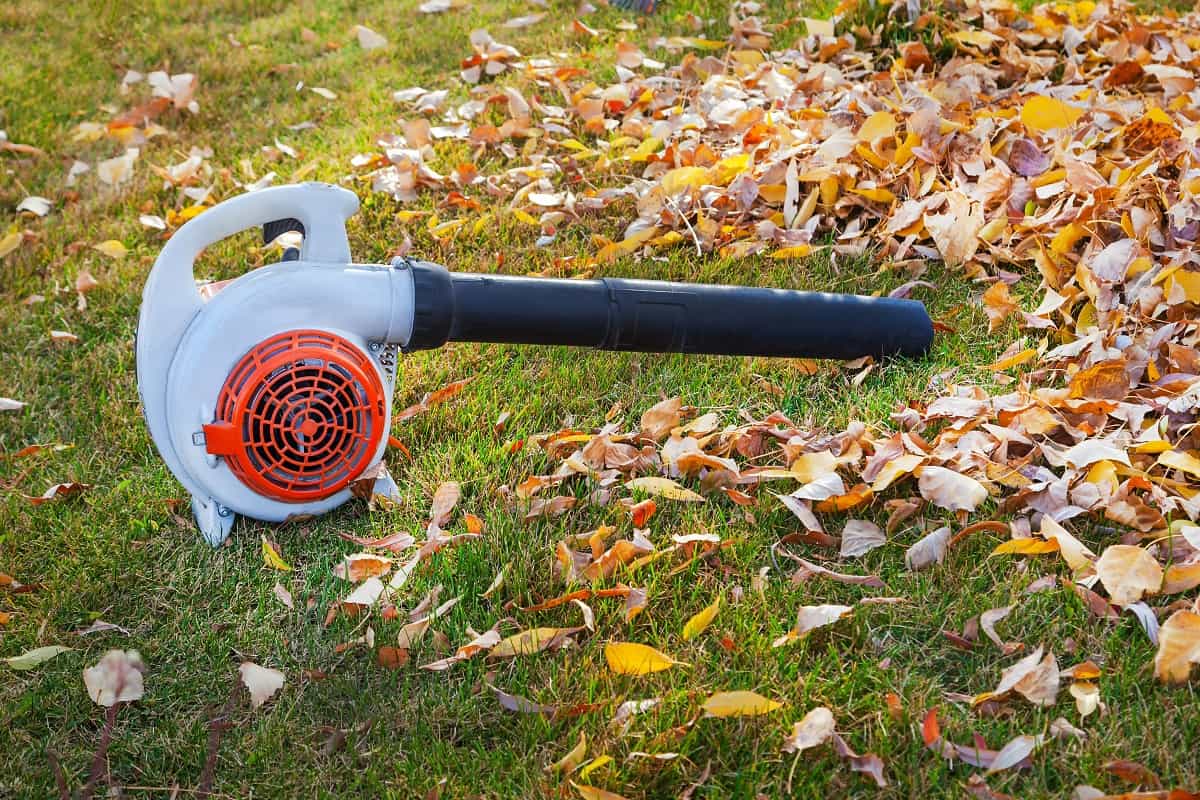
Sizes
Normal leaf blower weights range from 6 to 12 pounds (lb). Some blowers feature a shoulder strap, while bigger industrial models have a backpack design for more comfortable wearing over time.
Uses
You can use the leaf blowers to swiftly clean any outside space, such as decks, balconies, patios, sidewalks, and porches. Blower-vacuum combos are now a common type of leaf blower.
The blower can convert to a vacuum with a flip of a switch, sucking up the leaves and mulching them. To eliminate the trouble of utilizing an A/C outlet and trailing a cord, some electric models also include rechargeable battery packs.
How it Works
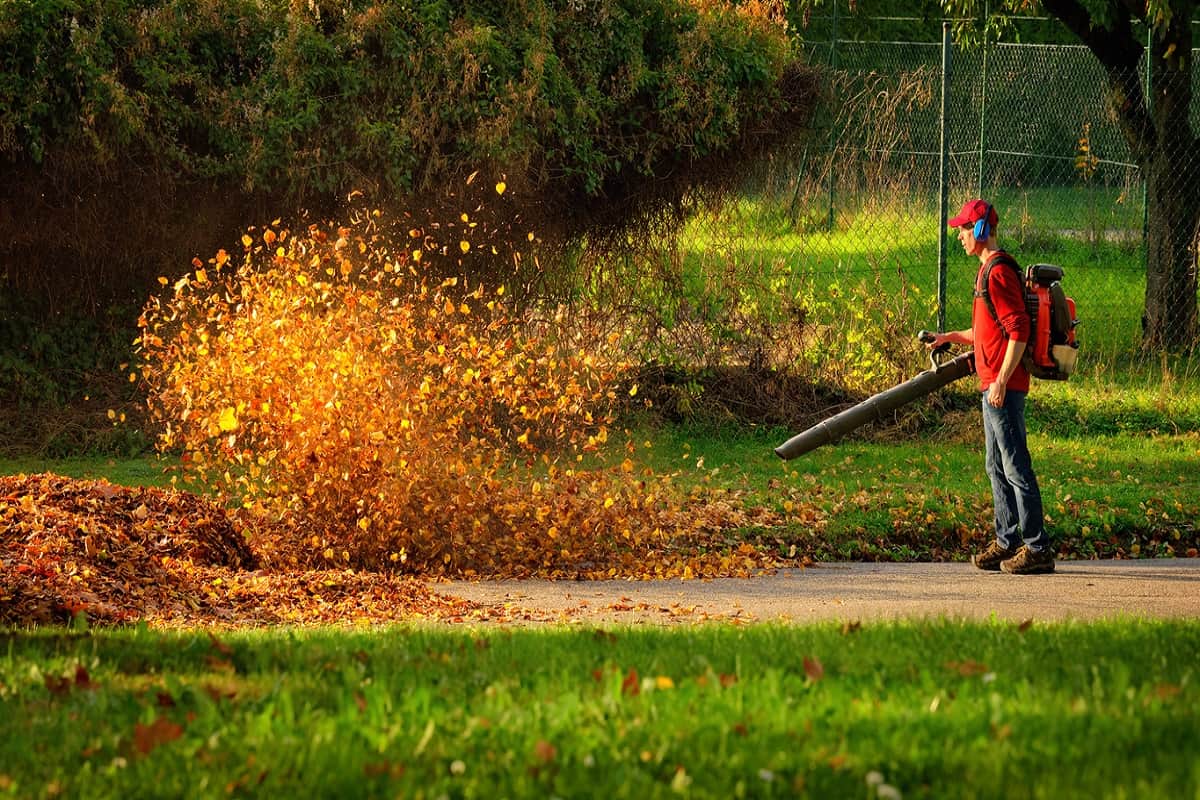
A leaf blower impeller spins outside air to create a centrifugal force. This air is forced through the blower tube, resulting in a tremendous forced air push to remove lightweight debris.
Air blasts out of the blower tube at a high velocity, determined by the motor's power output. This airspeed is measured in units of cubic feet per minute (CFM).
How Are Leaf Blowers Rated?
Airspeed through a leaf blower is measured in CFM, as we've just mentioned, and this unit is used to rate the blowers' performance. Blowers usually have a CFM of 200 to 800.
The ability to move significantly more leaves than models at the low end of the range is enabled by high CFM ratings between 500 and 800.
Another way to gauge a blower's power is to measure the speed at which air leaves the device in miles per hour (mph). Instead of the ability to move a lot of leaves, this refers to the blower's capacity to move a leaf along far. A leaf blower typically has a speed rating between 100 and 250 mph.
Force Vs. Speed
CFM and mph may appear to be the same but they are not. In fact, it is suggested to consider both when assessing how well your leaf blower will do its function. One way to think about it is that the engine of a leaf blower produces force.
No matter what surface the force contacts, a consistent volumetric flow, or CFM, is produced. On the other hand, when it comes to mph, the force and pipe diameter both have an impact on the velocity.
For gasoline-powered motors, the size of the motor of a leaf blower is measured in cubic centimeters (cc), with larger motors having the capacity to dispense more fuel and operate at higher power.
For corded electric blowers, the power output is measured in amps (A). Whereas cordless, battery-powered blowers are commonly measured in volts (V).
However, utilizing CFM and mph is considerably simpler than trying to calculate the power output of a leaf blower with cc, A, or V. Also, CFM and mph are constant metrics across all types of leaf blowers.
What Are The Types Of Leaf Blowers?
Raking up fallen leaves on your yard or driveway is far easier with both gas and electric models, saving you time and preventing blisters. If you plan to purchase, you may consider the following:
1. Corded Electric Leaf Blowers
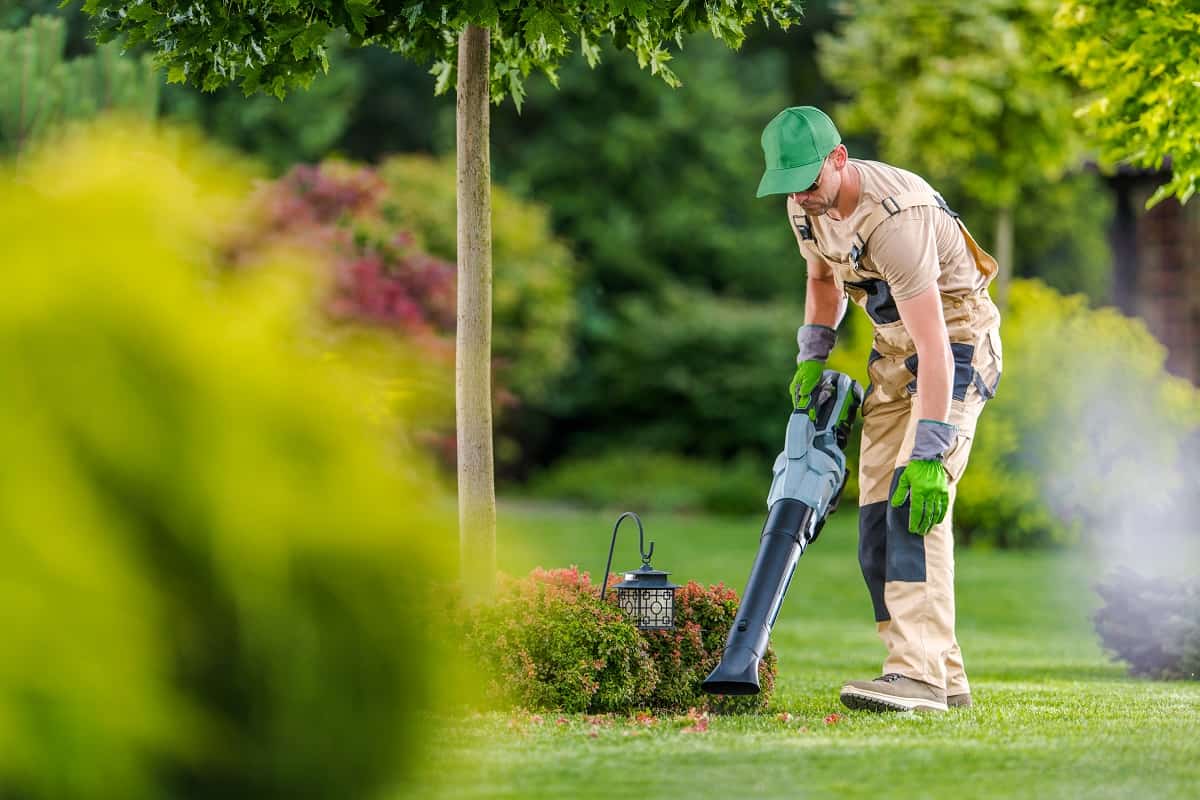
Models with cords often weigh 8 lb or less and may be operated with one hand. Positive aspects include hassle-free push-button starting, no exhaust emissions, and power that is comparable to that of a handheld gas blower.
However, the power connection restricts your movement and can be a headache when maneuvering around trees and other obstructions. If a power outlet is consistently 100 feet or less from the work location, take into account an electric blower.
Check out this corded electric leaf blower on Amazon.
2. Battery-Powered Handheld Leaf Blowers
These devices, often known as cordless electric leaf blowers, are easier to manage and just slightly heavier than corded electric leaf blowers.
They've gained popularity among individuals who don't want to be bound by a power cable or the maintenance requirements of a gas-powered device. Power is also comparable to the greatest gas blowers.
Rechargeable batteries have a maximum operating time of 30 minutes, so if the task takes longer than that, you'll need to stop and let the battery recharge or have a backup battery on hand.
Check out this battery-powered handheld leaf blower on Amazon.
3. Battery-Powered Backpack Leaf Blowers

The greatest qualities of a gas-powered backpack and battery handheld blowers are combined in these tools. They are quiet, easy to start, and don't utilize oil or gasoline like the majority of battery blowers.
Many battery backpack blowers use 5.0- or even 7.5-amp-hour batteries, as opposed to the 2.5-amp-hour batteries that are usual in most handheld models. They are generally typically more powerful than handheld battery blowers while also offering better run times.
Check out this battery-powered backpack leaf blower on Amazon.
4. Gas-Powered Backpack Leaf Blowers
Over handheld blowers, these blowers often have more power. Most weigh at least 17 lb, which is nearly twice as much as a handheld gas blower.
However, your back and shoulders bear the weight rather than your arms. They make a little more noise than electrics, just like portable gas models. They cannot shred or vacuum. Also, they are more expensive than hand-held blowers.
Check out this gas-powered backpack leaf blower on Amazon.
5. Gas-Powered Wheeled Leaf Blowers
Large yards may benefit from a wheeled blower. This type has some limitations, it cannot vacuum or shred, and they need roughly 8 square feet of storage space. They are heavy and difficult to push and manage, especially uphill.
Although some versions are surprisingly quiet and should fulfill even the strictest noise limitations, they are typically pricey and noisy. Large four-stroke engines don't need their gasoline and oil mixed.
Check out this gas-powered wheeled leaf blower on Amazon.
6. Gas-Powered Handheld Leaf Blowers
Models that run on gas can go anywhere and never need to be charged. To start the engine, you do need to grab a pull cord, and gas engines need regular tune-ups. An average model weighs around 10 lb.
Gas models are typically very noisy. Despite being quieter than they once were, it is best to use hearing protection. Most of them feature two-stroke motors, which call for combining fuel and oil. You may omit it with four-stroke engines, and they run cleaner.
Check out this gas-powered handheld leaf blower on Amazon.
How To Maintain Leaf Blowers?
Electric blowers don't need much maintenance. Simply clean them off, and be aware of dirt accumulation on the air intake. If you use a mulcher, clear the bag and blower of any small leaf particles.
Every year or so, you need to tune up the gas-powered blowers, and you'll need to maintain fuel on hand. You must mix your own gas/oil blend for two-stroke engines or purchase it already blended.
For tips, you can reduce maintenance and possibly avoid one or two annual maintenance visits if you buy premixed gas or oil that uses ethanol-free gasoline and maintain the blower in a heated space throughout the winter.
Wheeled blowers need more maintenance since they have more moving parts. However, compared to a lawnmower or other similar lawn equipment, the commonly wheeled leaf blower requires less maintenance.
Conclusion

CFM and MPH are all important numbers to take into account when assessing how strong airflow from a leaf blower is. You may get the most air for your money when you consider all of them. Plus with proper maintenance, you can make your leaf blower last long.
Check out some interesting articles below.


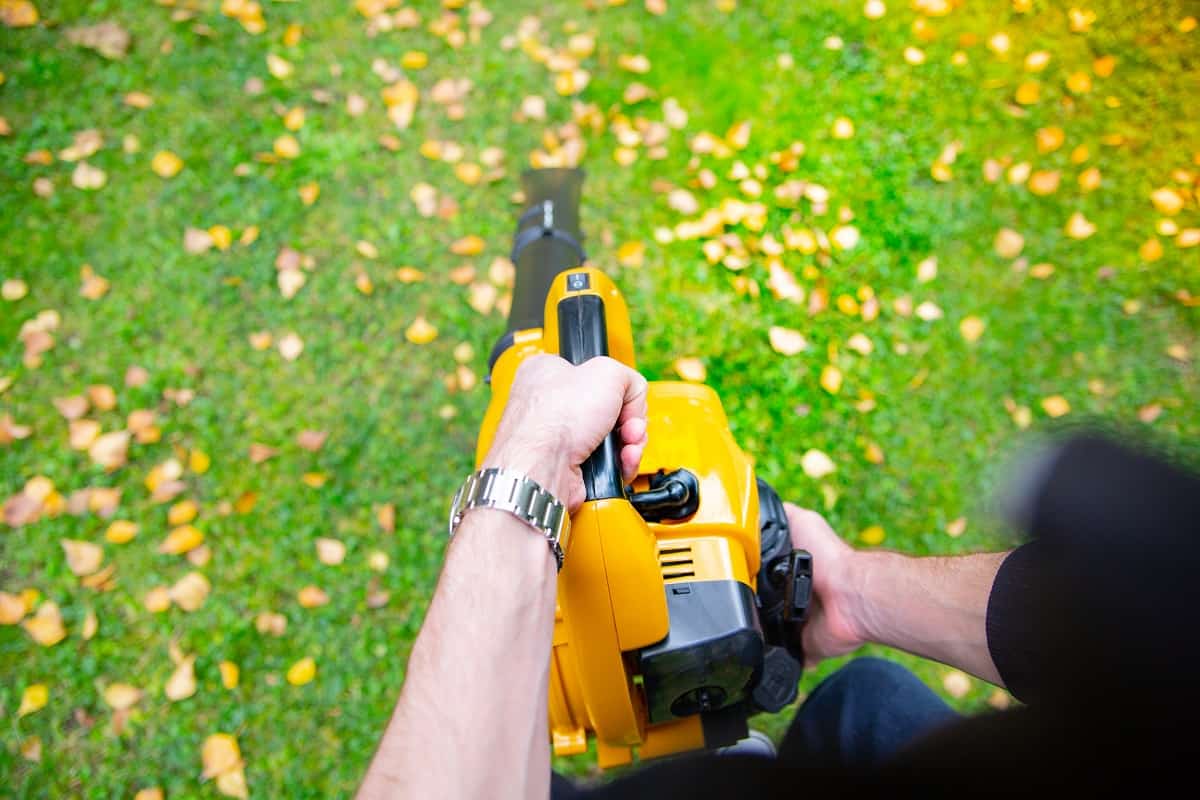





![A man using a portable vacuum to collect dead leaves, Will A Leaf Vacuum Pick Up Mulch? [Can It Remove Leaves From Mulch?]](https://landscapingbase.com/wp-content/uploads/2022/09/Man-using-a-portable-vacuum-to-collect-dead-leaves-600x400.jpg)

